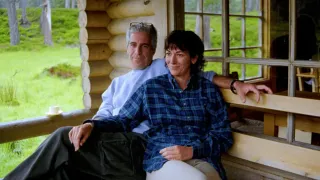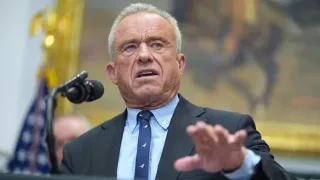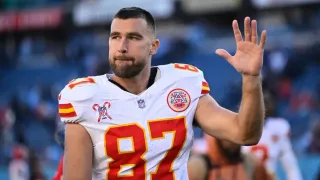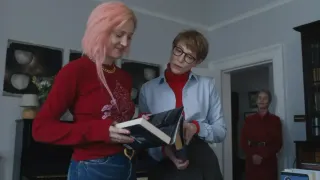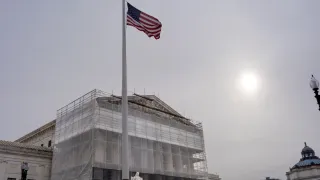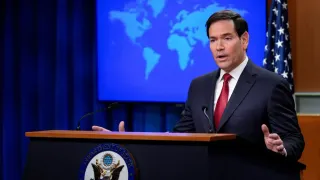September 1, 2024
'Deadpool' Tops Charts Yet Again as 'Reagan' Beats Expectations on Sluggish Labor Day
Kaitlyn Huamani READ TIME: 4 MIN.
Just like in the movies, Deadpool can't be killed.
"Deadpool & Wolverine," one of the defining movies of the summer, ruled the box office on a weekend with quiet openings and low theater attendance as the summer movie season came to an anticlimactic close.
For the second weekend in a row, "Deadpool & Wolverine," Marvel's smash hit that has shattered records and become the best-selling R-rated movie of all time, topped the charts, with other holdovers from the summer following behind. After six weeks in theaters, the film made $15.2 million domestically Friday through Sunday, and it's expected to cross the domestic $600 million mark following Monday's Labor Day holiday. The Ryan Reynolds and Hugh Jackman superhero flick will be one of only 16 titles to hit that milestone.
"Reagan," a biopic starring Dennis Quaid as the 40th U.S. president, was the only new release competitive with holdover films that opened earlier this summer. Exceeding projections, the first full-length film about President Ronald Reagan earned $7.4 million over the three-day weekend, with an estimated cumulative total of $9.2 million including projections for Monday.
Audiences have reacted to the movie positively, giving it an A CinemaScore and a 98% audience score on Rotten Tomatoes. Critics have been less receptive, giving it a 19% rating and deeming it rotten on the popular ratings site. It ranked No. 4 on the charts.
The summer movie season, which runs from Memorial Day through Labor Day, proved to be full of surprises, flops and overperformers. "Deadpool," "Despicable Me 4," "Inside Out 2," and "Twisters" brought in impressive earnings and remained on the charts for several weeks after their releases, with all four titles claiming spots in the top 10 Labor Day weekend.
"If you were to write up a blueprint of perhaps the most unpredictable summer ever, 2024 might be just that," said Paul Dergarabedian, senior media analyst at Comscore. " May gave us a challenge, but June, July and the beginning of August really delivered."
The cumulative summer box office clocked in at over $3.6 billion domestically – a dip of 10% from 2023's $4 billion season that could likely be attributed to the "Barbenheimer" box office craze that drew crowds en masse to see "Barbie" and "Oppenheimer" last summer.
The close of the season brought what Dergarabedian described as a "stranglehold" of familiar summer hits on box office rankings, with "Alien: Romulus" and "It Ends With Us" rounding out the top three for the second weekend in a row. Six of the top 10 films of the weekend had been playing for three or more weeks.
"Alien: Romulus" placed second, earning $9.3 million from Friday through Sunday. The sci-fi horror film directed by Fede Álvarez and starring Cailee Spaeny, Isabela Merced and David Jonsson, has earned $88.8 million domestically.
"It Ends With Us" ranked No. 3 for the third consecutive weekend, earning just over $7.4 million with a slight edge over "Reagan." The Sony movie starring Blake Lively and Justin Baldoni, who also directed, is projected to reach a domestic total of $136 million after the weekend.
In a surprise bump, "Twisters" rounded out the top five with $7.2 million in its seventh week in theaters. Glen Powell and Daisy Edgar-Jones star in the standalone sequel to the 1996 hit "Twister."
"Afraid," a horror-thriller with an AI villain, made $3.7 million in one of the weekend's modest openings, with Sony projecting $4.5 million in earnings through Monday. It came in ninth place in weekend rankings. The Blumhouse Productions and Colombia Pictures release follows John Cho and Katherine Waterston as a couple whose family is chosen to test a new AI assistant. Unsurprisingly, the technology spins out of control and threatens the lives of the family and those around them.
Zoë Kravitz's directorial debut "Blink Twice" landed softly the last weekend of August, and brought in $4.7 million in its second weekend.
In another quiet opening, "1992," which centers on a turbulent Los Angeles amid deadly riots during the titular year, made a meager $1.4 million Friday through Sunday, with distributor Lionsgate projecting that total will bump up to $1.6 million after Labor Day. The film stars Tyrese Gibson, Scott Eastwood and Ray Liotta.
The drama is the third sluggish opening Lionsgate has seen at the unofficial end of summer. The video game adaptation "Borderlands" and a remake of "The Crow" both underperformed in August.
"Slingshot," another new sci-fi release starring Laurence Fishburne and Casey Affleck, opened with $485,282 across 845 screens. Distributor Bleecker Street estimates the movie will reach $572,763 cumulatively after the holiday.
Estimated ticket sales for Friday through Sunday at U.S. and Canadian theaters, according to Comscore. Final domestic figures will be released Monday.
1. "Deadpool & Wolverine," $15.2 million.
2. "Alien: Romulus," $9.3 million.
3. "It Ends With Us," $7.4 million.
4. "Reagan," $7.4 million.
5. "Twisters," $7.2 million.
6. "Blink Twice," $4.7 million.
7. "The Forge," $4.6 million.
8. "Despicable Me 4," $4.1 million.
9. "Afraid," $3.7 million.
10. "Inside Out 2," $2.8 million.
